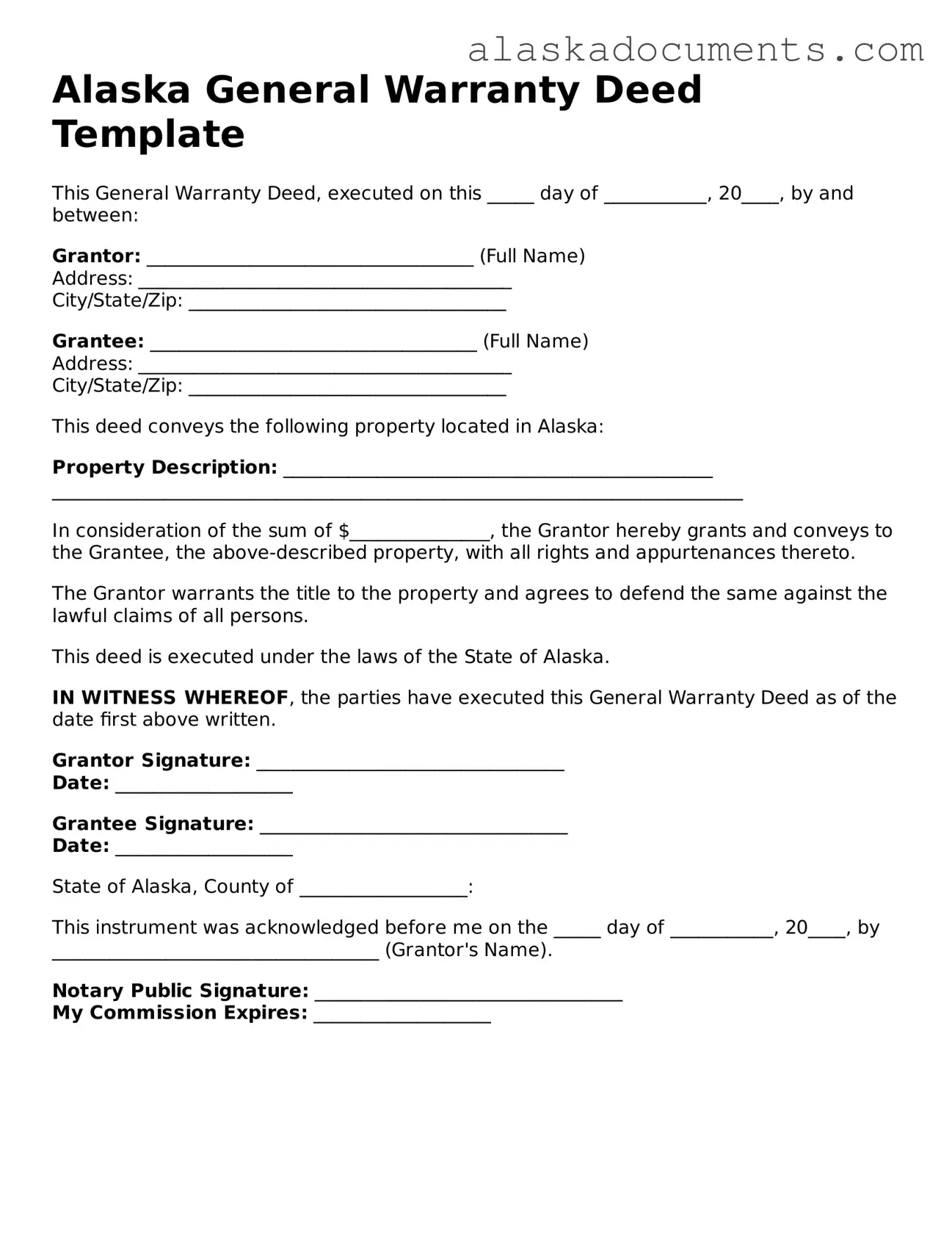Alaska General Warranty Deed Template
This General Warranty Deed, executed on this _____ day of ___________, 20____, by and between:
Grantor: ___________________________________ (Full Name)
Address: ________________________________________
City/State/Zip: __________________________________
Grantee: ___________________________________ (Full Name)
Address: ________________________________________
City/State/Zip: __________________________________
This deed conveys the following property located in Alaska:
Property Description: ______________________________________________
__________________________________________________________________________
In consideration of the sum of $_______________, the Grantor hereby grants and conveys to the Grantee, the above-described property, with all rights and appurtenances thereto.
The Grantor warrants the title to the property and agrees to defend the same against the lawful claims of all persons.
This deed is executed under the laws of the State of Alaska.
IN WITNESS WHEREOF, the parties have executed this General Warranty Deed as of the date first above written.
Grantor Signature: _________________________________
Date: ___________________
Grantee Signature: _________________________________
Date: ___________________
State of Alaska, County of __________________:
This instrument was acknowledged before me on the _____ day of ___________, 20____, by ___________________________________ (Grantor's Name).
Notary Public Signature: _________________________________
My Commission Expires: ___________________
